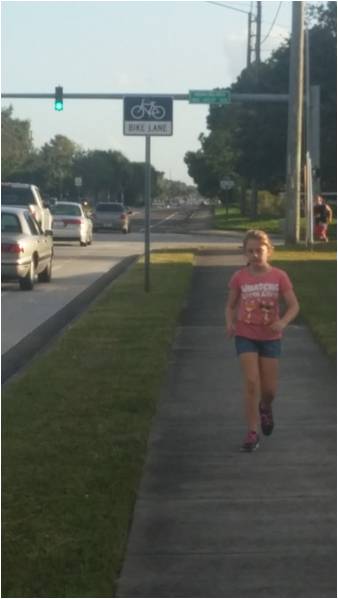 When I started out as a newbie to the Pinellas Planning Council (PPC) and Metropolitan Planning Organization (MPO), I continually heard the term “Complete Streets.” After I began to research the term and inquire about it, I was intrigued with what I learned. Complete Streets is a transportation policy and design approach that requires streets to enable safe, convenient and comfortable travel for users of all ages and abilities regardless of their mode of transportation (biking, walking, and transit). As I began to ponder this concept, I immediately realized its importance and got excited about it.
When I started out as a newbie to the Pinellas Planning Council (PPC) and Metropolitan Planning Organization (MPO), I continually heard the term “Complete Streets.” After I began to research the term and inquire about it, I was intrigued with what I learned. Complete Streets is a transportation policy and design approach that requires streets to enable safe, convenient and comfortable travel for users of all ages and abilities regardless of their mode of transportation (biking, walking, and transit). As I began to ponder this concept, I immediately realized its importance and got excited about it.
Complete Streets really hit home for me while walking to the produce market with my nine year old daughter, Tuscany. As we walked, we talked about our new home city, Dunedin. We are both thrilled to be living in a place where things are more accessible by walking, biking and transit. Tuscany, in particular, is eager to get about in new ways. During the discussion, I taught her the concept of Complete Streets and she has not stopped talking about it since. She is regularly pointing out to me the streets that are “complete” and those that are not and explaining why. We have engaged in multiple conversations about this topic and why it matters. It is important to people of all ages, for a variety of reasons.
So, why does it matter if we have Complete Streets? First and foremost, Tuscany and I think about safety.
For example, the other day, as I drove home from work, I had to maneuver my car into the oncoming traffic lane to avoid hitting a woman walking in the narrow street. Sadly, she had no other option, as there was no sidewalk available. Fortunately, I was able to avert this danger. However, many crashes happen due to circumstances just like these involving vulnerable users (pedestrians, bicyclists and motorcyclists). Florida is a notoriously dangerous place for vulnerable users; and Pinellas County tops the list for fatality rates amongst pedestrians and bicyclists (ranking #3 and #1 respectively). The MPO maintains this type of data in its “Crash Report” and works toward improving safety through education, funding transportation projects and initiatives such as Complete Streets.
While safety is important to us all, it is especially important to our young and aging populations. Among those groups, driving is often not an option. For many, biking, walking and busing are their sole sources of independent mobility. It’s been said that walking is the first thing we want to do and the last thing we want to give up. Creating an environment where they can feel safe and comfortable doing so is imperative to their livability.

Tuscany riding in the bike lane on Keene Road (CR 1) in Dunedin. Had it not been for this post, she would have been on the sidewalk. While there is a dedicated bike lane, it may not be ideal for all users, especially a younger, less experienced biker.
While there is indisputable evidence to support the fact that Complete Streets vastly improve safety, many simply want to have options other than driving a car. One-third of Americans don’t drive at all, many wait longer to acquire a driver’s license, and there is a growing desire to walk and bike more. This is especially true of the millennials (those born roughly between 1982 and 2001) who are moving to urban areas in record numbers. They want the option of safely getting about without having to drive. I have two children that fall into this category, although they are both of sufficient age to become licensed drivers, they have chosen not to do so.
Complete Streets also serve to encourage a more physically active lifestyle. Livable communities with Complete Streets can play a vital role in increasing physical activity and decreasing obesity. The Surgeon General recognizes the connection between livable communities with Complete Streets and healthier living through Step It Up! The Surgeon General’s Call to Action to Promote Walking and Walkable Communites.
Additionally, there are proven economic benefits to Complete Streets, including increased number of businesses, employment opportunities, retail sales and visitor spending. If people are made to feel safer and more comfortable in an inviting area that offers a great sense of place, they will visit more frequently and stay longer.
New York City has been successful in implementing Complete Streets in areas you wouldn’t think possible. Check out this video by STREETFILMS “Complete Streets: It’s About More Than Bike Lanes” which demonstrates the results and response of the local community. It just may change the way you think!
[vimeo https://vimeo.com/22886687]
Here in Pinellas County we are currently evaluating the role the newly unified MPO/PPC can play in implementing and promoting Complete Streets projects. Most recently, the MPO hosted a presentation by Jeff Arms, AICP, PE, PTOE, PMP and Jamie Krzeminski, PE, PTOE on Complete Streets entitled “Implementing Complete Streets Through the MPO” that was well attended by local government staff, elected officials and others.
Are there Complete Streets in your community? How does that make you feel about your community?









